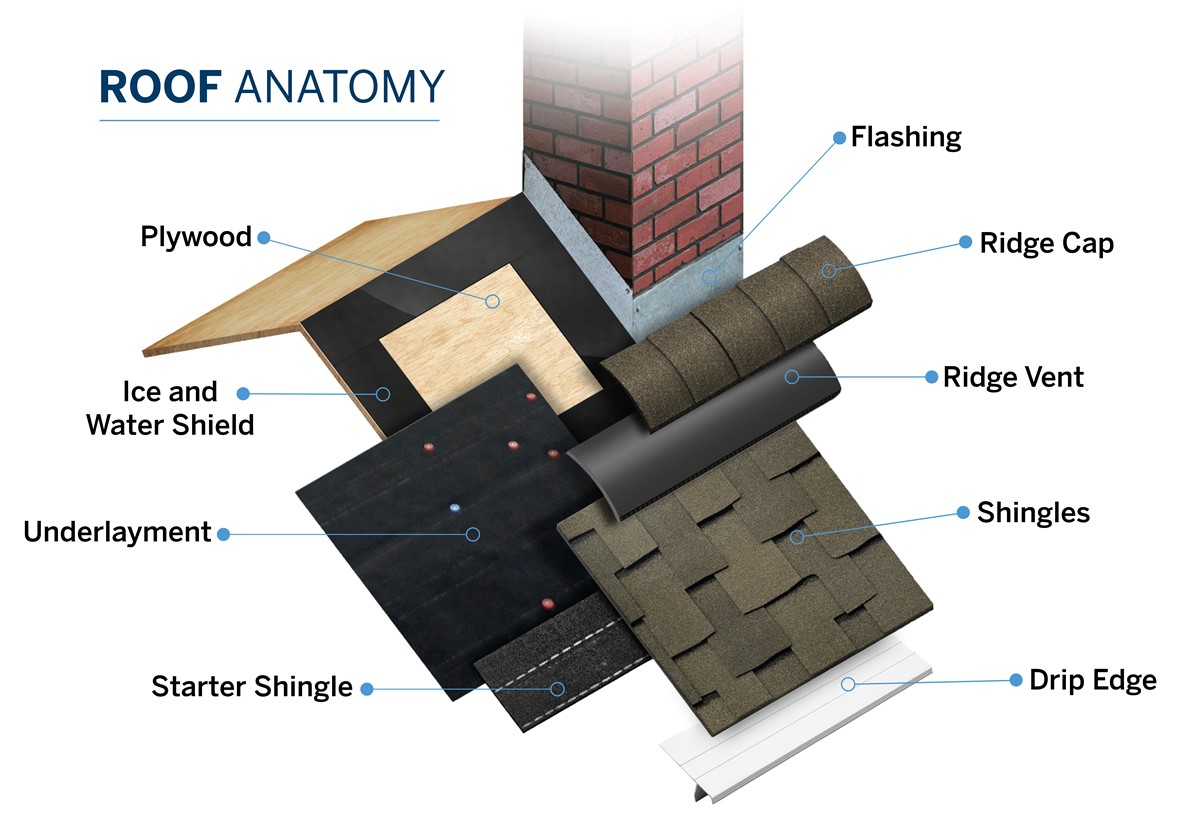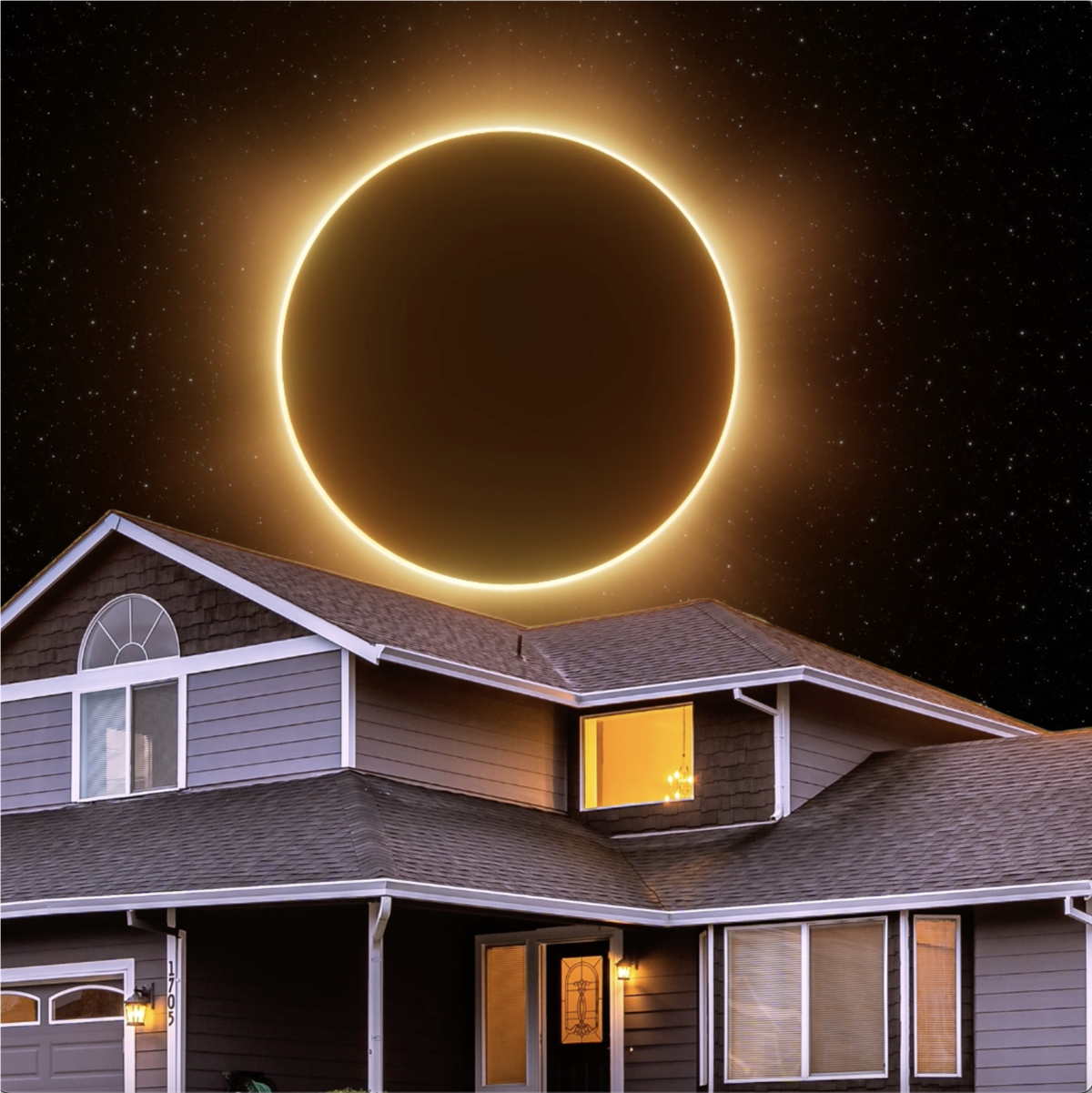
Your roof is made up of many distinct parts and pieces. All these roof parts, when properly installed, work together to provide an efficient roof system for your home. All these pieces work together to allow your home to breathe, reduce strain on HVAC systems, and shed moisture to protect your home from under the ground all the way to the roof.
In this blog, Music City Roofers will walk you through what you will find with a total roof replacement. There will not be a quiz to name the parts of a roof. Think of this as a guide to help you review your next invoice from Music City Roofing.
We will even provide you with a roof diagram so that you can see where these parts reside.
Plywood Decking is the Base of Your Roof
The roof deck or roof sheathing is the foundation of your roof. Your roof decking is a plywood base that is built to provide a sturdy flat surface to build the rest of your roofing system on top of.
Decking issues may not be discoverable until after the shingles have been removed and uncovers the condition.
Some homeowners ask why we often replace roof decking. Simply put, your decking needs to be free from rot, water damage, and warping. If the condition is questionable, it is best to replace it to ensure that your roof will last as long as possible. Professionally installed decking with a fully functional roofing system may not need to be replaced for 25-30 years.
What is Ice and Water Shield?
Ice and water shield is also known as a leak barrier. The ice and water shield are a membrane that mounts in the eaves and rakes, valleys and around the skylights and the chimney. It protects your roof and the most leak prone portions.
Imagine a thin piece of rubber with an adhesive on the back side, sealing off the edges of your roof, the valleys, and anywhere pipes or chimney penetrate. This membrane sticks to your roof and will not blow away with severe winds or slide with the immense pressure caused by snow or ice accumulation.
The leak barrier is a critical piece of a modern roofing system. It serves one purpose, to prevent moisture penetration, and stop leaks from forming.
Underlayment... is it the Same as Ice and Water Shield?
Underlayment and ice and water shield are two distinct parts of your roof. Yes, both are located under the shingles, but they each have a vital role to play in the health of your roofing system.
The underlayment is a breathable barrier to protect your roof against wind-driven rain and other moisture that can damage your roofing system. The breathable technology allows moisture found to exit the roof system. This feature creates an environment that allows your roof to breathe and prevents mold, rot, and premature decay of your roofing system.
Drip Edge is Small but Mighty
With all the parts of your roof, the drip edge is an unsung hero. Drip edge protects your home in several diverse ways. First, the drip edge prevents water from getting into the fascia and directs water to the gutters.
Secondly, the drip edge acts as a barrier to prevent insects and small animals from accessing your home.
Third, your drip edge protects your basement! By directing water into your gutters, drip edge prevents water from spilling out, soaking the ground, and penetrating your basement.
Your Shingles Start with a Starter Shingle
Your roof must start somewhere, and the starter shingles are designed to mount at the eaves and rakes. They create a straight and solid line at the edge of your roof for additional shingles to be added upon.
Ridge Vents Move the Air Out
Your ridge vent is found at the highest point of your roof. The ridge vent acts as the exit for your roof ventilation system. In many homes, soffit venting (found on above the exterior walls of your home) acts as the intake- pulling in cool air and the ridge vent forces hot and humid air out of the top of your roof. Proper attic ventilation removes trapped hot and humid air, which can lead to roof deterioration from the inside out.
Ridge Cap Shingles
The ridge cap shingle is installed where two sides of the roof meet at the top of your house. The cap mounts directly on top of the ridge vent to protect it from the elements and is built from the same materials as the shingles (or other roofing material) you are using.
The ridge cap is different from standard shingles in that the caps are thicker and come pre-bent.
Your ridge cap prevents moisture penetration at the ridge opening while letting air flow out of your attic.
A Wide Array of Roofing Materials
Homeowners can choose from many different types of roofing on the market. Asphalt shingles are the most common roof type in the United States. They are easy to install, cost efficient, and built to last. Some materials may not be an option depending on a low slope roof.
Aside from asphalt shingles, other common roofing materials you may find are:
Metal
Slate
Cedar Shake
Flat Rubber
And more.
Music City Roofers is Here to Help with Your Nashville Roof!
Whether you have a small roof leak or storm damage, the team at Music City Roofers is here to help. We are local experts in high quality, residential roofing services. All roof inspections are free. Simply reach out and schedule a time with our team of customer service experts.
Our team will be happy to inspect your roof and provide our professional assessment of the condition and the best options for your home. Call us today to get the process started!
Tags
Subscribe to Music City Roofers's Blog




Comments